 Last updated: August 7th, 2024
Last updated: August 7th, 2024
13 Common Plumbing Issues That Homeowners Should Know & How To Fix Them
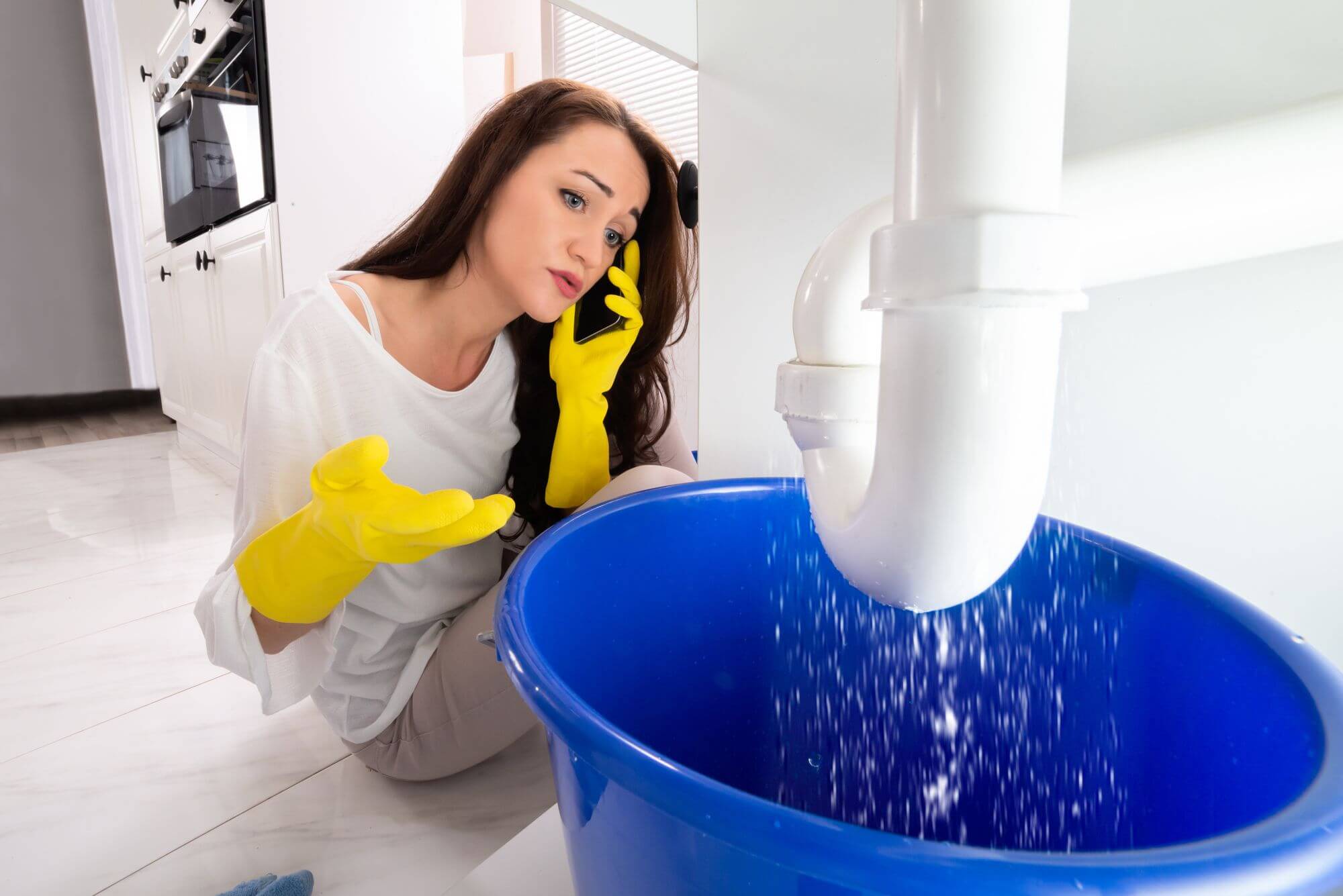
Every homeowner will encounter a plumbing issue at some point. That dripping faucet or sluggish drain can quickly go from a minor annoyance to major headache. But before you call in the professionals, you can tackle the problem yourself!
This guide explores 13 of the most common plumbing woes homeowners face, along with simple solutions and step-by-step tips to get their pipes flowing smoothly again. So, grab your toolbox and get ready to become a plumbing pro – we’ll show you how to fix those pesky leaks, clogs, and other plumbing predicaments without breaking the bank.
Common Plumbing Problems & Fixes
Keeping your home’s plumbing running smoothly is essential, but problems can arise. This section explores common plumbing issues and simple fixes you can tackle yourself, empowering you to maintain a trouble-free water flow.
1. Clogged Drains
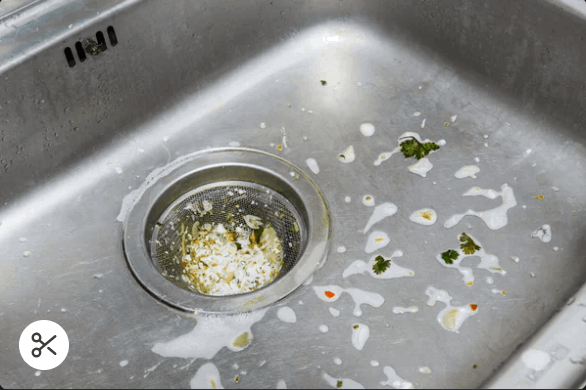
Clogged drains are a frequent plumbing woe for homeowners, and they can occur in various places, from your kitchen sink to your shower. Here’s a breakdown of why clogged drains happen and the telltale signs to watch out for:
Causes of Clogged Drains
- Gradual Build-Up: Over time, everyday materials can accumulate in your pipes and gradually restrict water flow. Here are some common culprits:
- alve Malfunction: The fill valve regulates the tank’s water level. If the fill valve malfunctions or the shut-off mechanism fails, the tank can overflow, and water will run down the overflow tube into the bowl, creating a continuous running sound.
- Incorrect Water Level: Every toilet has a designated water level line inside the tank. If the water level is too high, it can pressure the flapper valve, causing it to leak or not seal properly, leading to a running toilet.
- Blocked Or Faulty Flapper Chain: The flapper chain connects the flush handle to the flapper valve. If the chain gets tangled, binds, or breaks, it can prevent the flapper from closing completely after a flush, causing a running toilet.
Symptoms of Running Toilets
- Constantly Running Water Sound: This is the most obvious sign, often noticeable during quiet times or at night. You might hear a continuous refilling or a faint running water noise even after flushing.
- High Water Level In The Tank: If the tank’s water level is consistently above the designated fill line, it indicates a potential issue with the fill valve or flapper.
- Increased Water Bills: Unexplained spikes in your water bill can indicate that a running toilet is wasting significant amounts of water.
- Visible Water Leaks: In some cases, a running toilet might also lead to visible leaks around the toilet’s base, indicating a more serious issue.
Solutions To Fix A Running Toilet
- Adjust The Flapper Valve: Sometimes, a simple adjustment of the flapper chain can resolve the issue. If the flapper itself is damaged, replace it.
- Replace The Fill Valve: The fill valve might be faulty if the tank refills even after reaching the designated level. Replacing the fill valve is a relatively straightforward process.
- Adjust The Float: The float controls the water level in the tank. If it’s malfunctioning or out of position, it can cause the tank to continuously refill. Adjust the float arm or replace it if necessary.
2. Clogged Or Low Water Pressure
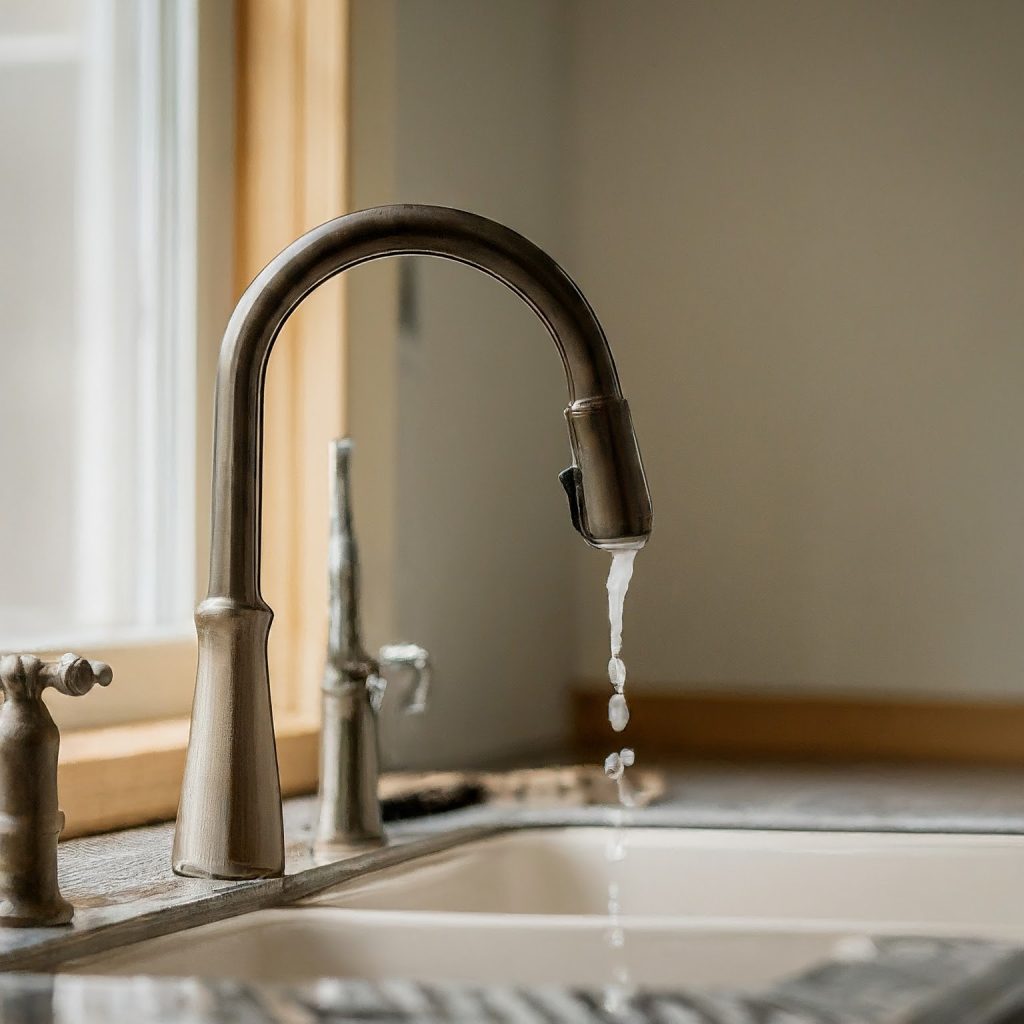
Low water pressure or clogged pipes can be frustrating experiences, hindering everyday tasks like showering or washing dishes. Here’s a look at the reasons behind these issues and the symptoms that can help you identify the culprit:
Causes Of Clogged Pipes
- Debris Buildup: Over time, various materials can accumulate inside pipes, causing blockages. This can include:
- Soap scum and hair in bathroom drains.
- Food scraps, grease, and coffee grounds in kitchen drains.
- Mineral deposits from hard water throughout the plumbing system.
- Foreign objects accidentally flushed down toilets.
- Corrosion: Older galvanized steel pipes can corrode over time, creating internal bumps or flakes that restrict water flow.
Causes Of Low Water Pressure
- Clogged Aerator: Most faucets have a small screen (aerator) at the spout tip to regulate water flow and create a more aerated stream. This screen can significantly reduce water pressure if it gets clogged with mineral deposits or debris.
- Clogged Pressure Regulator Valve: The pressure regulator valve helps maintain consistent water pressure throughout your house. However, it can restrict water flow if it becomes clogged with debris or malfunctions.
- Partially Closed Shut-Off Valves: Shut-off valves might be located under sinks, behind appliances, or near the water meter. If one of these valves is partially closed, it can limit water flow to specific fixtures or the entire house.
- Main Water Supply Issues: In rare cases, problems with the main water line entering your house from the city or well could be causing low water pressure throughout the neighborhood.Hair: Hair is a major contributor to clogged drains, especially in showers and bathroom sinks. It can form clumps that trap soap scum, shampoo, and other debris.
- Soap Scum: Soap scum, a combination of minerals from hard water and soap residue, can build up on the inner walls of pipes, narrowing the passage for water.
- Grease & Fat: Fats, oils, and grease solidify as they cool down inside pipes, causing blockages, especially in kitchen drains.
- Food Scraps: Tiny bits of food scraps that escape the drain trap can accumulate further down the pipes, creating clogs.
- Mineral Buildup: In areas with hard water, mineral deposits can build up inside pipes over time, contributing to narrowing and eventual clogs.
- Foreign Objects: Accidental drops of small objects like jewelry, toys, or cotton swabs can become lodged in drains, causing complete blockages.
Symptoms of Clogged Drains
- Slow Drainage: The most common sign is water draining slowly from your sink, bathtub, or shower. The water might take unusually long to recede after you turn off the faucet.
- Standing Water: In severe clogs, water might remain in the sink or bathtub basin even after turning off the faucet.
- Gurgling Sounds: Drains that gurgle when water runs may indicate a clog further down the drainpipe, with air trapped alongside the water flow.
- Overflowing Drains: A completely blocked drain can cause water to back up and overflow from the sink or bathtub.
- Unpleasant Odors: Organic matter trapped in a clog can decompose and create foul odors emanating from the drain.
Potential Solutions To Clear Clogged Drains
- Plunger: For bathtub/shower clogs, use a flange plunger to create suction and dislodge the blockage. For sink clogs, use a sink plunger that creates a tighter seal over the drain opening.
- Drain Snake (Zip-It): A long, flexible metal cable can be inserted into the drain to break up and remove clogs. Feed the cable down the drain slowly, turning the handle as you insert it.
- Baking Soda & Vinegar: For minor clogs, pour half a cup of baking soda down the drain, followed by a cup of white vinegar. The mixture will fizz as it reacts, helping to loosen minor clogs. Follow with hot water to flush the drain.
3. Leaky Faucets
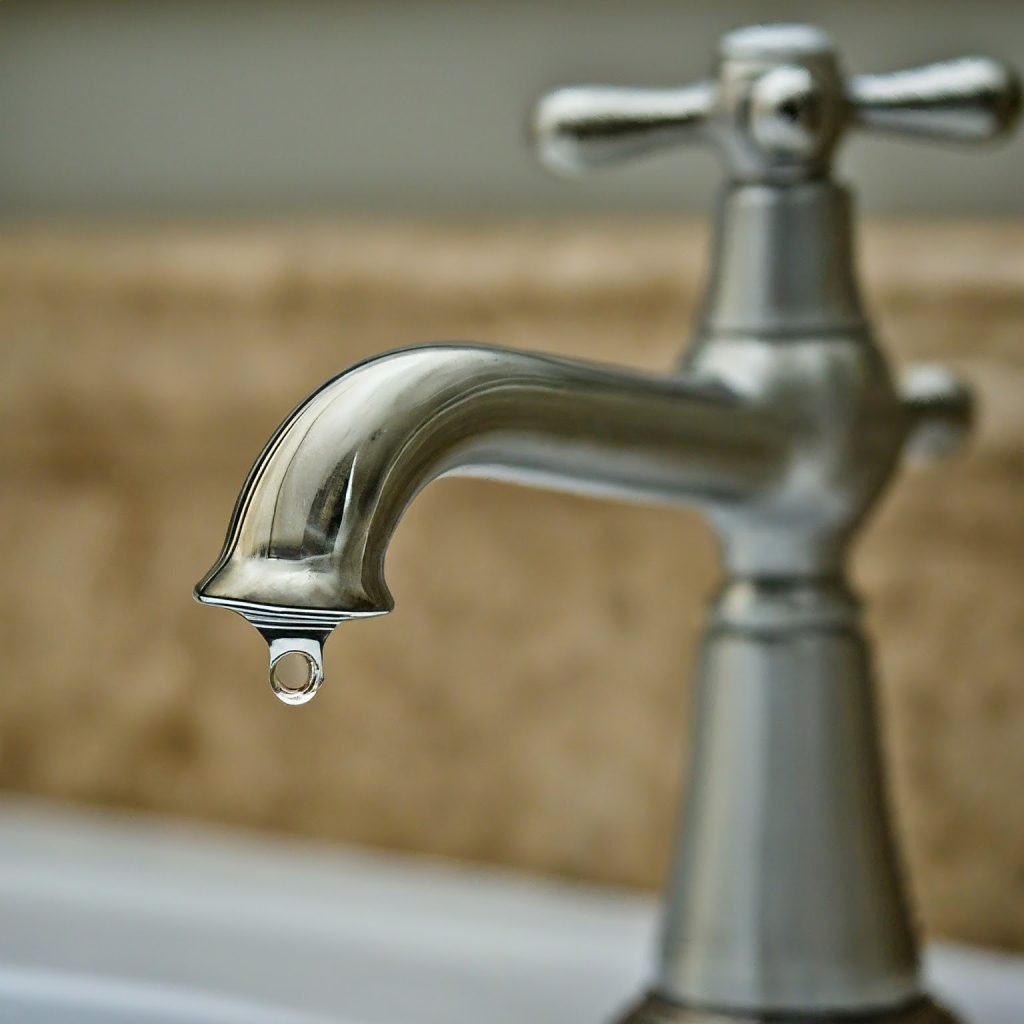
Leaky faucets are a common household nuisance but can also waste significant water. Here’s a breakdown of why they occur and the telltale signs to watch out for:
Causes of Leaky Faucets
- Worn-Out Washers & Gaskets: Over time, the rubber washers and gaskets inside the faucet that create a watertight seal can wear out due to friction and constant use, allowing tiny leaks to develop.
- Loose Packing Nut: The packing nut is located at the base of the faucet handle. If it loosens, water can seep through the handle stem.
- Damaged Valve Cartridge: In modern faucets, a cartridge regulates water flow. Leaks can occur if this cartridge becomes worn, damaged, or misaligned.
- Mineral Buildup: Hard water can cause mineral deposits to accumulate within the faucet, restricting proper movement and leading to leaks.
Symptoms of Leaky Faucets
- Dripping: The most obvious sign is the constant dripping sound from the faucet spout, even when the handle is off. This not only wastes water but can also be quite irritating.
- Spraying: A leak around the base of the handle or from the spout itself could indicate a worn packing nut or a damaged cartridge.
- Reduced Water Pressure: If the leak is affecting the internal workings of the faucet, you might notice a decrease in water flow when you turn on the tap.
- Rusted Or Corroded Components: Visible rust or corrosion on the faucet handle, spout, or base can indicate internal damage that might lead to leaks.
Solutions To Fix Leaky Faucets
- Tighten The Packing Nut: If the leak is around the base of the handle, carefully tighten the packing nut using a wrench. Be cautious to avoid over-tightening and damaging the faucet.
- Replace Worn-Out Parts: You must replace the faulty component for persistent leaks. Depending on the faucet type, this might involve replacing washers, gaskets, or cartridges. Many hardware stores sell faucet repair kits containing common replacement parts. If you need clarification on DIY repairs, consider calling a plumber.
4. Running Toilets
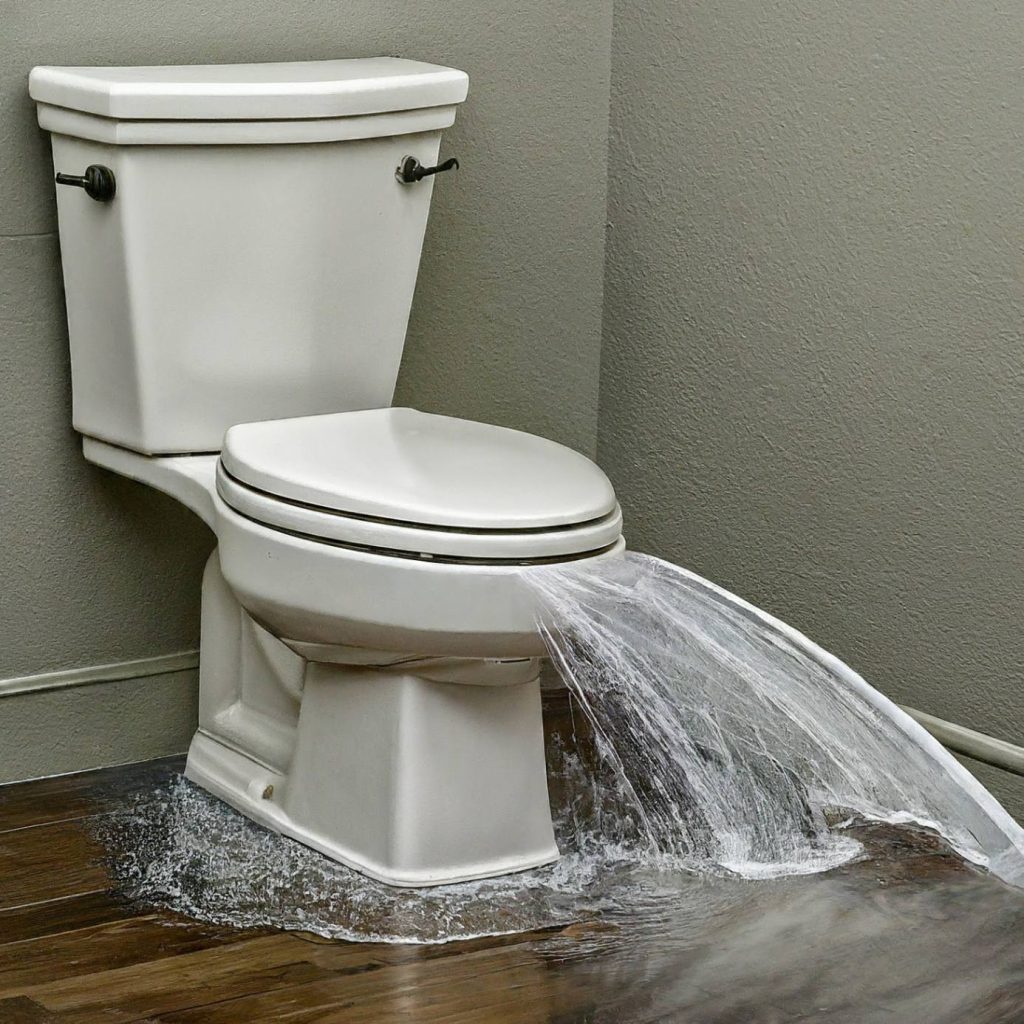
While seemingly harmless, running toilets can lead to significant water waste and increased utility bills. Let’s delve into the culprits behind a constantly running toilet and the signs that indicate it’s time for some troubleshooting:
Causes of Running Toilets
- Faulty Flapper Valve: This rubber seal at the bottom of the tank creates a watertight seal over the drainpipe. Over time, the flapper can become worn, warped, or lose its flexibility, allowing a small amount of water to leak constantly into the bowl, causing the toilet to refill and run continuously.
- Fill V
Symptoms Of Clogged Pipes Or Low Water Pressure
- Slow Draining: Water takes longer to drain from sinks, tubs, or showers.
- Reduced Water Flow: The flow from faucets or showerheads is weaker than usual.
- Uneven Water Flow: Water might sputter or spray inconsistently from the faucet or showerhead.
- No Water Flow: In severe clogs, water flow from a specific fixture might be completely absent.
- Low Pressure Throughout The House: If all or most fixtures experience low water pressure, the issue likely lies with the main water line, pressure regulator, or a shut-off valve.
Solutions To Fix Clogged/Low Water Pressure
- Clean The Aerator: Using pliers or a wrench, most aerators can be unscrewed from the faucet spout. Clean any visible debris and reinstall the aerator.
- Check The Pressure Regulator Valve: This valve is usually near the water meter. Consult your home’s manual or a plumber to locate and clean or replace the pressure regulator if necessary.
5. Burst Pipes
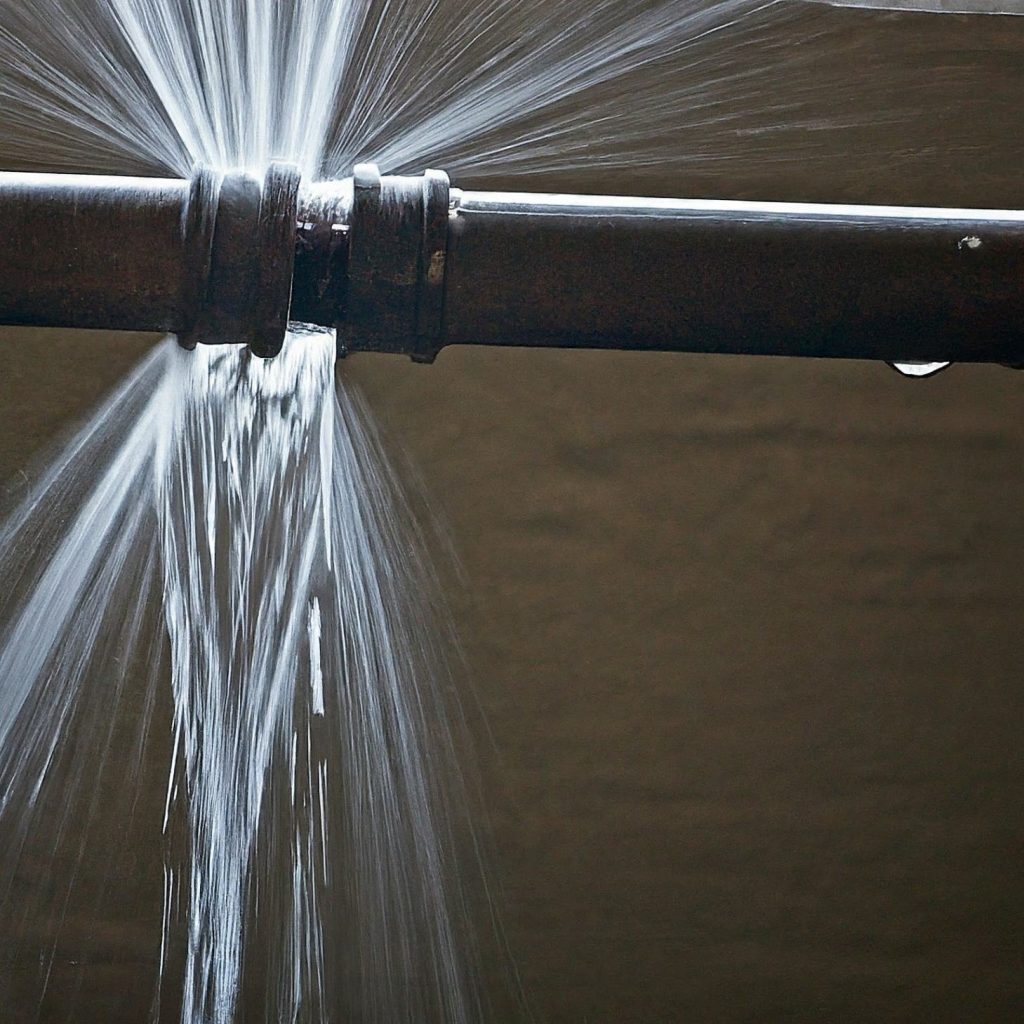
Burst pipes are a homeowner’s worst nightmare, causing sudden flooding and potential water damage. Here’s what you need to know about the reasons why pipes burst and the warning signs to watch out for:
Causes Of Burst Pipes
- Freezing Temperatures: This is the most common culprit. Water expands as it freezes, and if the pressure within a pipe increases enough, it can burst. Homes in areas with cold winters are particularly susceptible, especially if pipes are not insulated correctly in unheated crawl spaces or attics.
- High Water Pressure: Excessive water pressure within the plumbing system can put undue stress on pipes, eventually causing them to weaken and burst. This can be caused by a malfunctioning pressure regulator valve or a sudden surge in pressure.
- Corrosion & Wear: Over time, pipes can deteriorate due to rust, mineral buildup, or exposure to harsh chemicals. This weakens the pipe walls, making them more prone to bursting under pressure.
- Installation Issues: Improper pipe installation during construction can create weak points or stress concentrations, increasing the risk of bursts in the future. This could include using the wrong type of pipe for the application or inadequate pipe connections.
- Accidental Damage: Pipes can be accidentally punctured or damaged during renovations, yard work, or even by drilling holes in walls.
Symptoms Of Burst Pipes
- Sudden Leak Or Flooding: The most obvious sign is a visible leak or a sudden surge of water coming from a wall, ceiling, or floor. This indicates a burst pipe somewhere in the system.
- Hissing Or Knocking Sounds: Listen for unusual noises coming from your pipes. Hissing or knocking sounds can sometimes indicate a leak developing under pressure before a full burst.
- Reduced Water Pressure: If you experience a noticeable drop in water pressure throughout your house could be due to a burst pipe somewhere in the system.
- Cracks In Walls or Ceilings: Bulging walls or cracks in ceilings can sometimes be signs of water damage caused by a hidden burst pipe within the wall cavity.
Solutions For Dealing With Burst Pipes
- Emergency Shutoff: The first priority is to locate your house’s main water shut-off valve and turn off the water supply to prevent further flooding.
- Call A Plumber: Burst pipes require professional repair to replace the damaged section and ensure proper functioning.
6. Leaky Showers
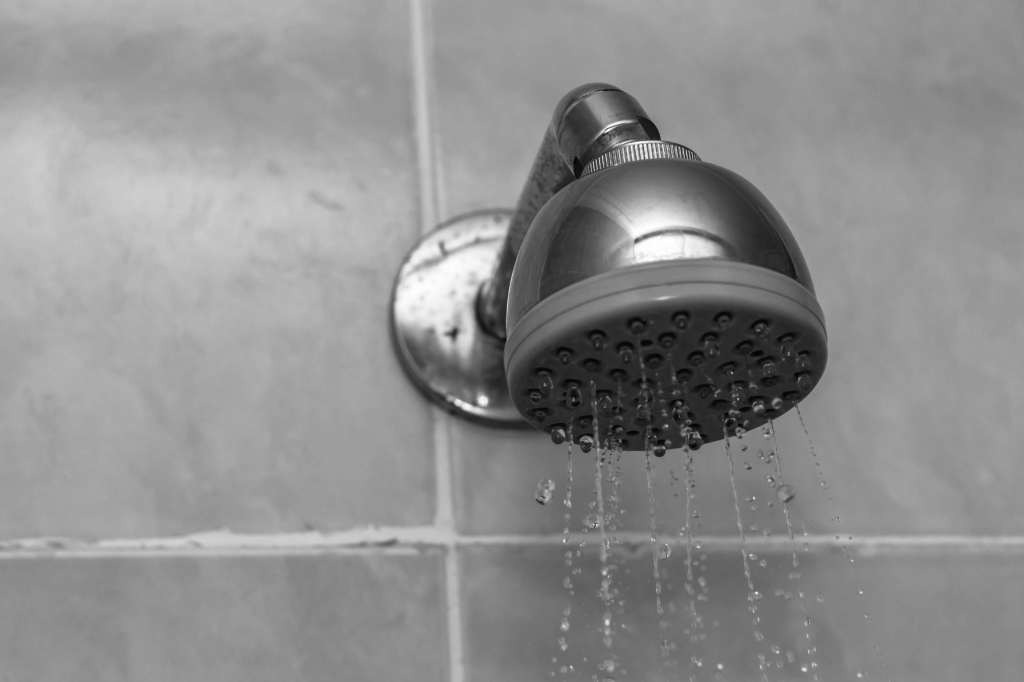
Leaky showers can be a major headache, causing water damage to your bathroom and potentially affecting rooms below. Here’s a breakdown of the culprits behind leaky showers and the signs to watch out for:
Causes Of Leaky Showers
- Cracked Shower Pan Liner: The shower pan liner, typically plastic or rubber, acts as a waterproof barrier beneath the shower floor tiles. Cracks or punctures in this liner can allow water to seep through to the subfloor and walls, leading to leaks.
- Worn-out Caulking: Caulk seals the gaps between the shower walls, floor, and pan, preventing water from escaping. Over time, caulk can dry out, crack, or become moldy, losing its waterproofing ability.
- Loose Showerhead Connections: Faulty or loose connections between the showerhead, arm, and pipe can cause drips or sprays outside the shower enclosure.
- Faulty Faucet Valves Or Cartridges: Similar to leaky faucets, worn-out washers or cartridges within the shower faucet can allow water to leak around the handle or base.
- Improper Shower Pan Installation: If the shower pan wasn’t installed correctly during construction, there might be issues with the slope or drainage, leading to water pooling and potential leaks.
Symptoms Of Leaky Showers
- Visible Water Damage: Look for signs of water damage around the shower base, such as cracked or peeling paint, warped floorboards, or mold growth. Check for dampness on the bathroom floor outside the shower stall.
- Soft Spots On The Shower Floor: If you step on the shower floor and feel soft spots, it could indicate water damage beneath the tile caused by a leaky pan liner.
- Unexplained Water Stains On The Ceiling Below: Water leaking from the shower can travel down through the walls and ceiling, causing water stains in the room below the bathroom.
- Mold Growth: Mold thrives in damp environments. It could indicate a leak if you notice mold growth around the shower base, caulking, or grout.
- Noisy Pipes: Hissing or gurgling sounds coming from the pipes behind the shower wall can indicate water pressure issues or leaks within the wall.
Solutions To Fix Leaky Showers
- Re-Caulking: For minor leaks around the shower walls or pan, remove existing caulk with a utility knife and recaulk using a silicone-based caulk specifically designed for bathrooms.
- Professional Repair: For leaks that seem to originate from the shower pan itself or require extensive work, consider calling a professional plumber to diagnose and repair the shower pan liner.
7. Main Water Supply Leak
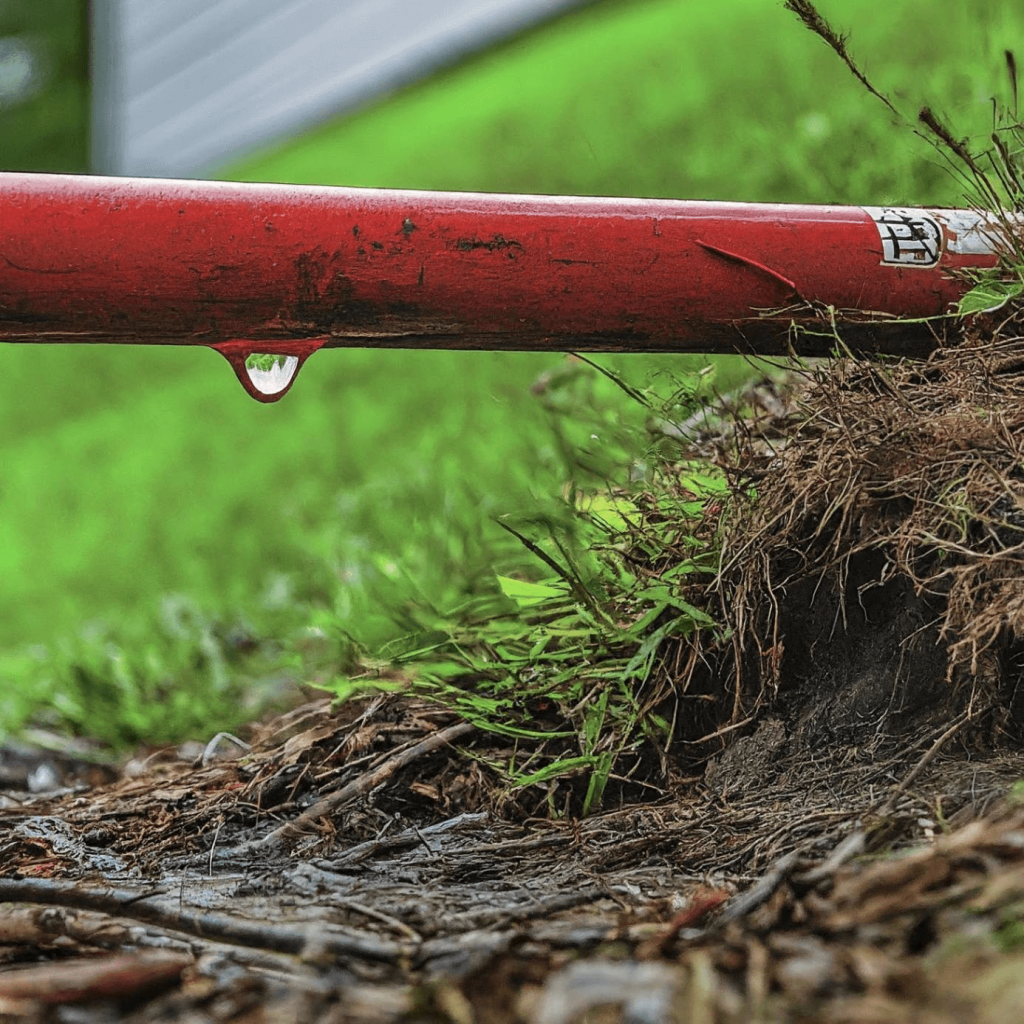
A leak in your main water supply line is a serious plumbing issue that requires immediate attention. Here’s a breakdown of the culprits behind these leaks and the warning signs to look out for:
Causes Of Main Water Supply Leaks
- Corrosion: Pipes, especially older ones made of copper or galvanized steel, can corrode over time due to exposure to minerals in the water or fluctuations in water pressure. This weakens the pipes and makes them more prone to leaks.
- Freezing Temperatures: If water in the pipes freezes and expands, it can cause them to burst, leading to a major leak. This is a concern in colder climates, where proper insulation for exposed pipes is crucial.
- Ground Movement: Shifting soil due to earthquakes, settling foundations, or even heavy construction nearby can stress underground water lines, causing cracks or breaks.
- Defective Installation: Improper installation of the main water line by a plumber, using faulty materials or techniques, can increase the risk of leaks in the future.
- Accidental Damage: During excavation work in your yard, accidentally hitting or severing the main water line can cause a significant leak.
Symptoms Of Main Water Supply Leaks
- Sudden Drop-In Water Pressure: A noticeable reduction in water pressure throughout your house can strongly indicate a leak in the main water supply line.
- Hissing Sound Near The Water Meter: If you hear a hissing noise coming from near the location of your water meter, it could be water escaping from a leak in the main line.
- Unexplained Wet Spots Or Flooding: Standing water or damp spots in your yard, especially near the foundation, could indicate a leak in the underground portion of the main water supply.
- High Water Bill: An unexpectedly high water bill compared to your usual usage could indicate a hidden leak somewhere in the plumbing system, including the main water line.
Solutions To Fix Main Water Supply Leaks
- Emergency Shutoff: The most crucial step is locating the main water shut-off valve and immediately turning off the water supply to your house to prevent further flooding.
- Call A Plumber: A licensed plumber is required to repair a leak in the main water supply line. They can diagnose the source of the leak and make the necessary repairs.
8. Sump Pump Issues
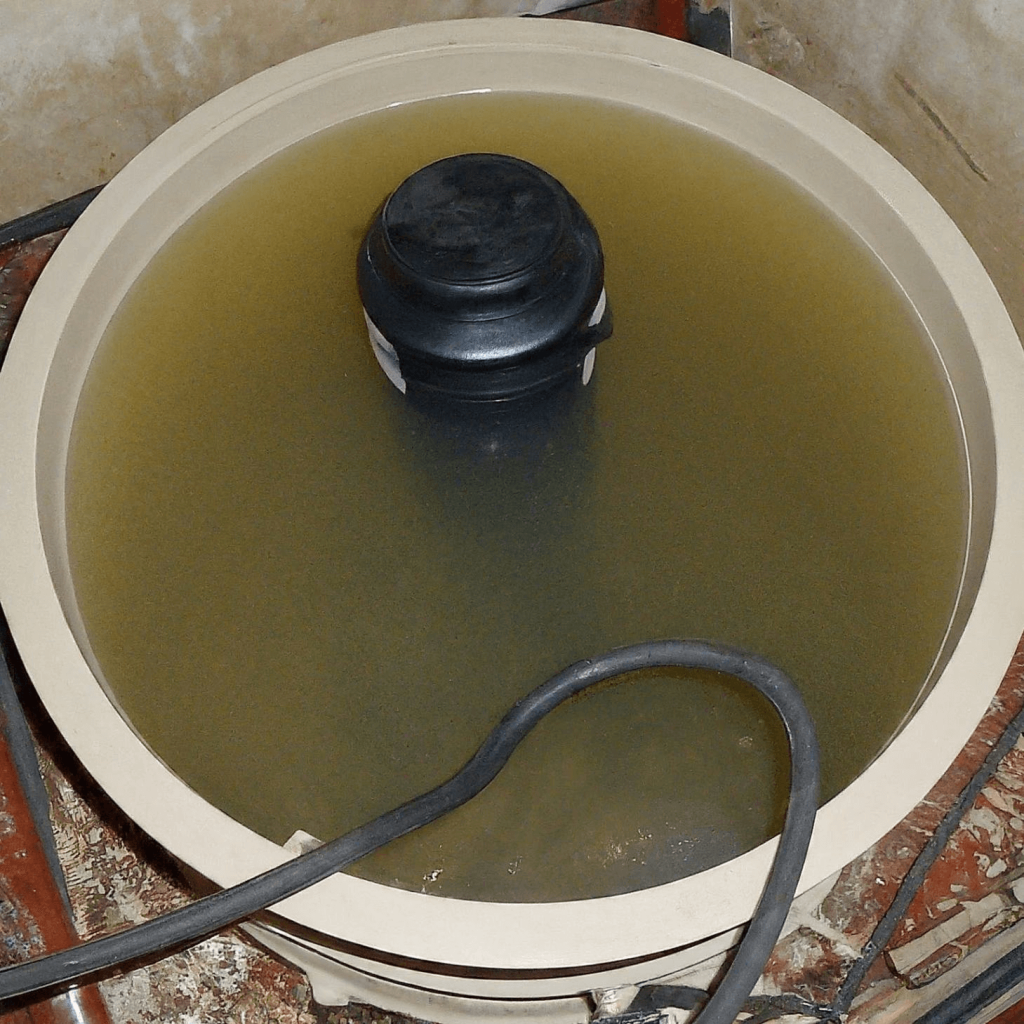
Sump pumps are vital in homes with basements, helping to prevent flooding by removing groundwater that seeps in from the surrounding soil. However, even these trusty warriors can encounter problems. Here’s a breakdown of why sump pump issues happen and the telltale signs to watch out for:
Causes Of Sump Pump Issues
- Power Outages: The most obvious culprit is a power outage. Without electricity, your sump pump won’t function, leaving your basement vulnerable to flooding during heavy rain or high groundwater levels.
- Clogged Pump Or Discharge Line: Over time, debris like leaves, dirt, or sediment can accumulate in the sump pump itself or the discharge line, preventing water from flowing freely. This can cause the pump to work harder, overheat, or fail to activate altogether.
- Float Switch Malfunction: The float switch triggers the pump to turn on when the water level in the sump pit rises. If the float switch gets stuck, clogged, or damaged, it won’t send the signal to activate the pump, leading to potential flooding.
- Failing Pump: Like any appliance, sump pumps have a lifespan. With constant use over the years, the pump components can wear out, leading to decreased efficiency or complete failure.
Symptoms Of Sump Pump Issues
- Basement Flooding: The most concerning sign is water accumulating in your basement, especially after heavy rain or periods of high groundwater.
- Pump Not Running: If the sump pump doesn’t turn on when the water level in the pit rises, there might be an issue with the power supply, float switch, or the pump itself.
- Pump Running Constantly: The pump might run continuously despite the low water level. This could indicate a clogged discharge line, a faulty float switch keeping the pump in “on” mode, or a failing pump struggling to keep up.
- Unusual Noises: Strange grinding, banging, or other noises from the sump pump pit can indicate a clogged pump, a failing component, or a misaligned float switch.
Solutions To Fix Sump Pump Issues
- Check The Power And Float Switch: Ensure the sump pump is plugged in and functioning. Check if the float switch is stuck or malfunctioning if the pump prevents activation.
- Clean The Pump And Discharge Line: Disconnect the pump from power and remove any debris blocking the pump or the discharge line.
- Professional Service: If the sump pump isn’t functioning properly after basic checks, consider calling a plumber for repairs or replacement.
9. Damaged Outdoor Plumbing
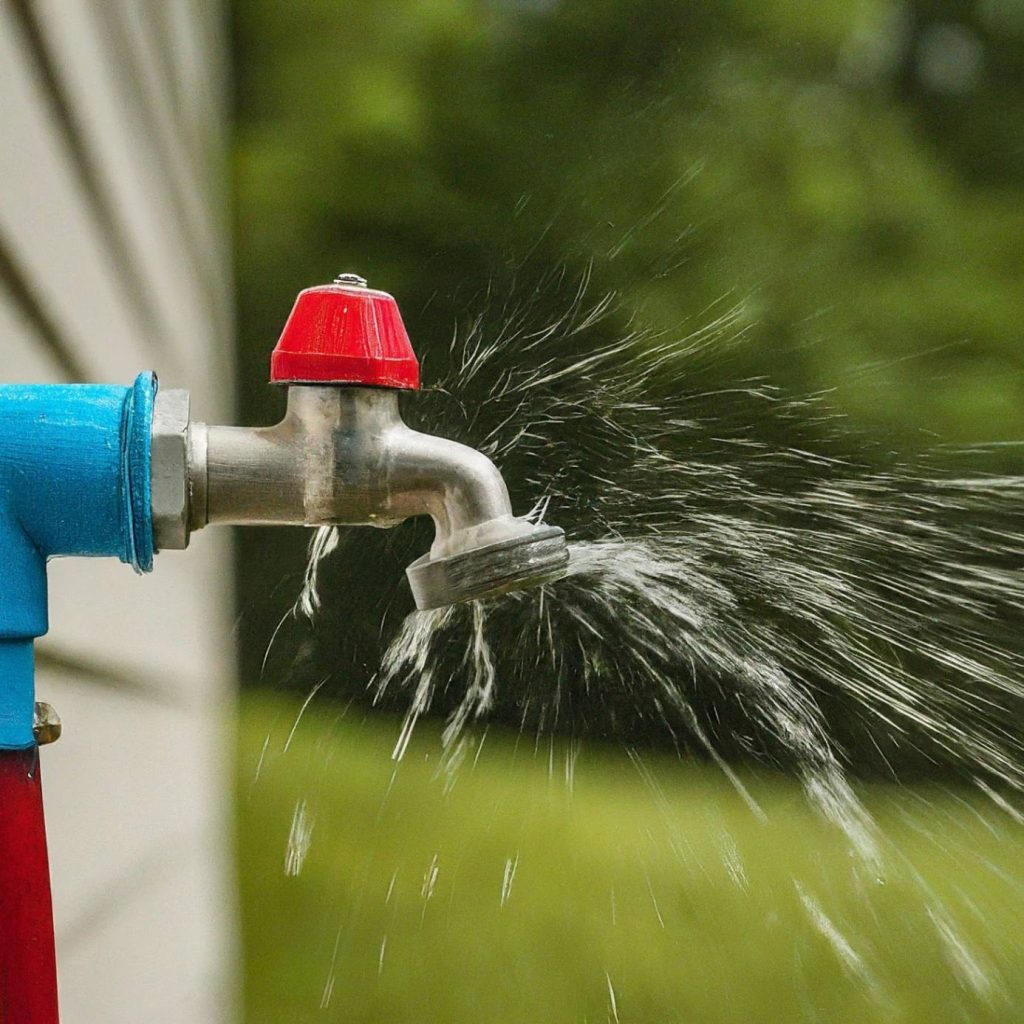
Keeping your outdoor plumbing in good shape is crucial to avoid costly repairs and frustrating water emergencies. Here’s a breakdown of the common reasons why outdoor plumbing gets damaged and the signs to watch out for:
Causes Of Damaged Outdoor Plumbing
- Freezing Temperatures are the biggest culprit, especially in regions with harsh winters. Water expands when it freezes, causing pipes to burst, hose bibs to crack, and sprinkler systems to be damaged.
- Sun Exposure: Continuous exposure to direct sunlight can deteriorate hoses, weaken pipe materials (especially plastic), and shorten their lifespan.
- Wear & Tear: Over time, constant use and exposure to the elements can cause hoses to crack, washers in hose bibs to wear out, and connections to loosen, leading to leaks.
- Accidental Damage: Outdoor plumbing is susceptible to accidental nicks or snags from yard tools, lawnmowers, or even playful pets chewing on hoses.
Symptoms Of Damaged Outdoor Plumbing
- Leaks: Visible leaks from faucets, hose bibs, or around pipe connections indicate damage that needs immediate attention.
- Reduced Water Pressure: If you notice a significant drop in water flow from outdoor faucets or sprinklers, it could be due to a leak or a blockage somewhere in the line.
- Spouting Or Spraying Water: A constantly dripping or spraying hose bib, even when shut off, signifies a worn-out washer or a damaged internal component.
- Cracked Or Broken Pipes: Visible cracks in pipes or around hose bibs are a clear sign of damage, likely caused by freezing or wear and tear.
- Wet Spots or Flooded Areas: Unexplained wet areas near hose bibs, foundation walls, or sprinkler systems could indicate an underground leak.
Solutions To Fix Damaged Outdoor Plumbing
- Insulate Exposed Pipes: During winter, insulate exposed outdoor pipes to prevent freezing and potential bursts.
- Shut Off And Drain Outdoor Plumbing: Before freezing weather arrives, turn off the water supply to outdoor faucets and drain any remaining water to avoid frozen and cracked pipes.
- Replace Hose Bibbs Or Repair Minor Leaks: For minor leaks or worn-out hose bibbs, replacements are often available at hardware stores and can be DIY projects for the handy homeowner. For more extensive repairs, call a plumber.
10. Water Heater Not Working
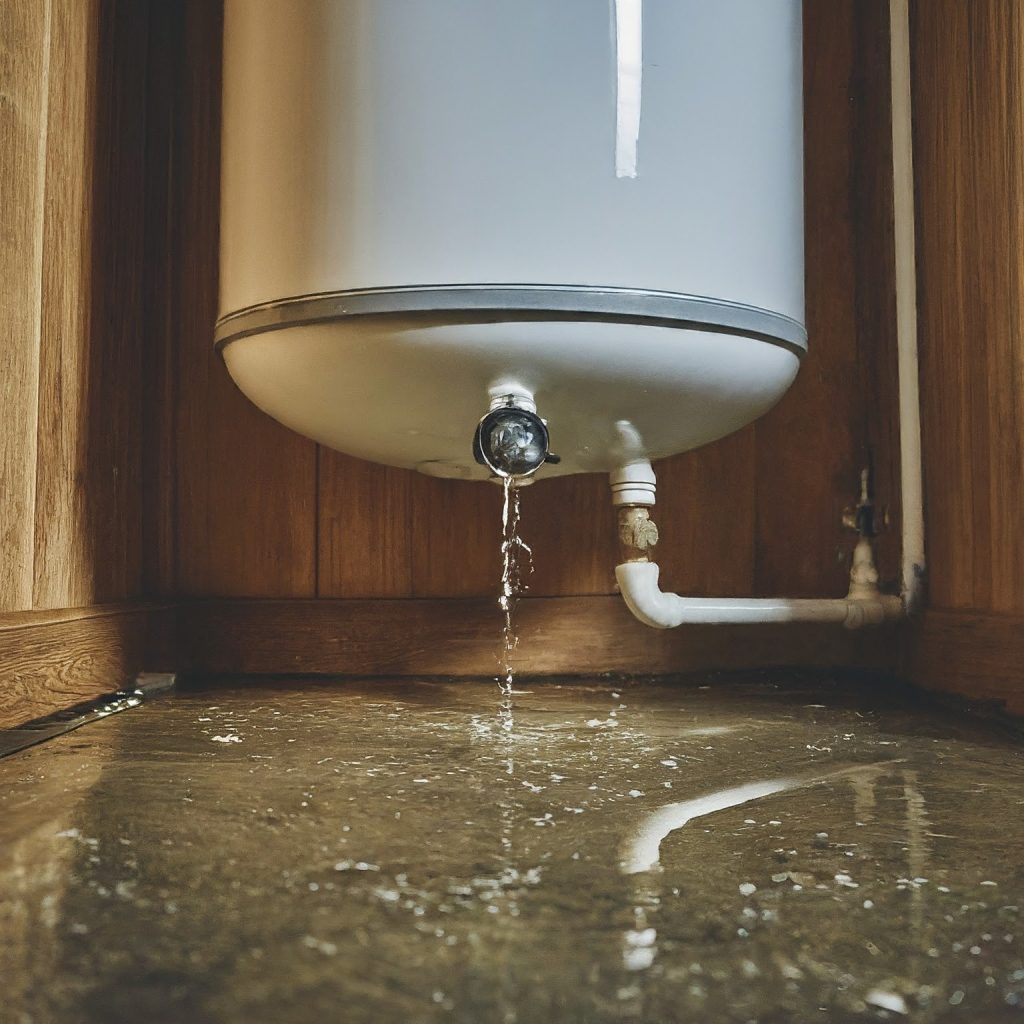
Hot showers are a modern luxury; a malfunctioning water heater can put a real damper on your day. Here’s a breakdown of the common reasons why your water heater might not be working and the signs to watch out for:
Causes Of Water Heater Failure
- Faulty Heating Element: The heating element is responsible for warming the water in the tank. Over time, mineral buildup or electrical malfunctions can cause the element to fail.
- Malfunctioning Thermostat: The thermostat controls the water temperature within the tank. A faulty thermostat might prevent the water from heating properly or could overheat the water, leading to a safety shut-off.
- Sediment Buildup: Hard water can lead to sediment accumulating at the bottom of the water heater tank. This buildup can reduce the water heater’s efficiency and eventually lead to overheating or malfunction.
- Failing Water Heater: Water heaters have a lifespan of around 10-15 years. If your water heater is nearing the end of its lifespan, it might start experiencing various issues and eventually fail.
Symptoms of Water Heater Problems
- No Hot Water: This is the most obvious sign of a problem. You might turn on the hot water tap and get cold water.
- Lukewarm Water: Even if you get hot water, it might not be as hot as usual. This could indicate a malfunctioning heating element or thermostat not reaching the desired temperature.
- Unusual Noises: Strange noises, such as popping, banging, or rumbling, coming from the water heater can indicate internal problems.
- Leaking: Leaks around the water heater tank can be a sign of corrosion, loose fittings, or a failing tank that needs replacement.
- Rusty Water: Rusty or discolored hot water can be caused by internal corrosion within the water heater tank.
Solutions To Fix Water Heater Problems
- Reset The Thermostat: Some water heaters have a reset button that can sometimes resolve minor glitches. Consult your water heater’s manual for instructions.
- Check The Temperature Setting: Ensure the thermostat on your water heater is set to the desired temperature.
- Call A Plumber: If resetting or adjusting the thermostat doesn’t solve the issue, or if the water heater is old and malfunctioning, call a plumber for diagnosis and potential repairs or replacement.
11. Sewage Pipe Issues
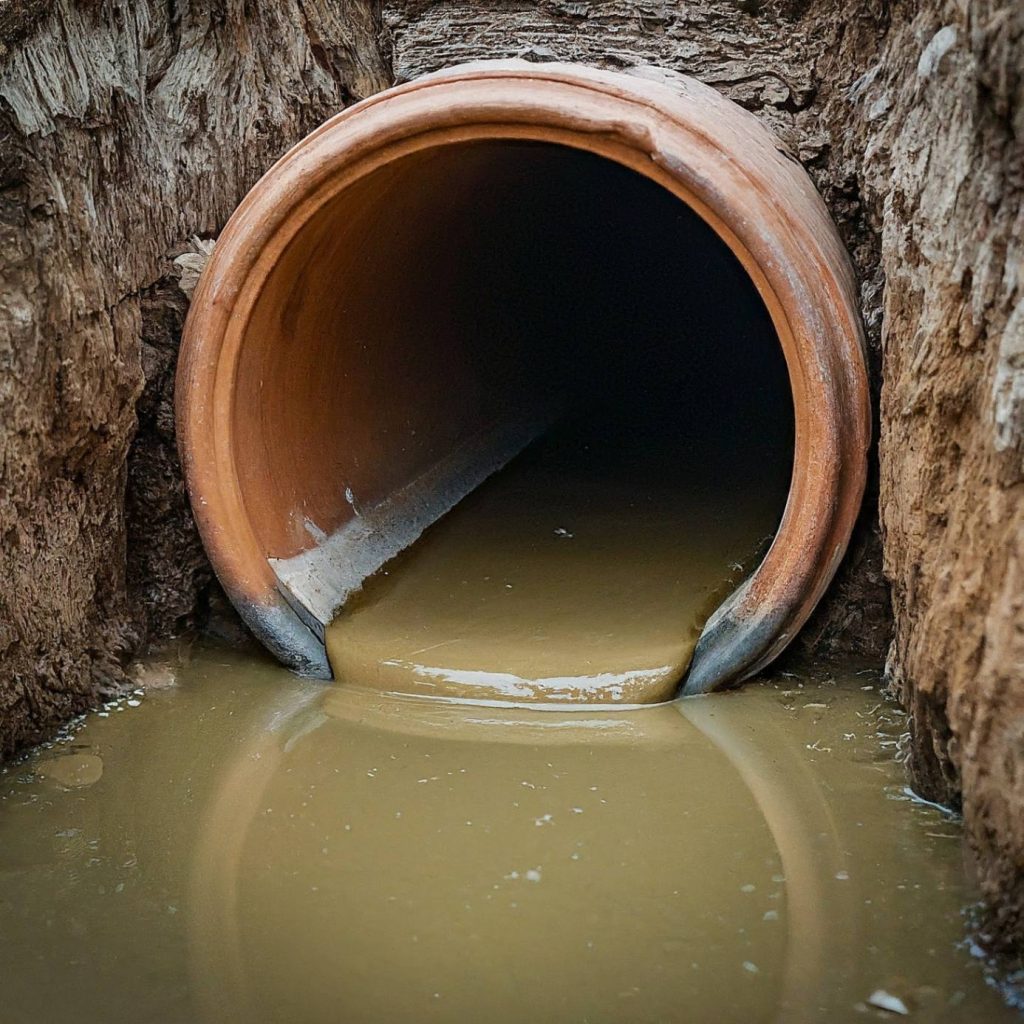
Sewage pipe issues can be a messy and unpleasant experience for any homeowner. Understanding the reasons behind these problems and the warning signs can help you address them promptly and prevent backups or overflows.
Causes Of Sewage Pipe Problems
- Blockages: The most common culprit behind sewage problems is blockage within the pipes. Here are some common causes of blockages:
- Grease And Fat: Grease and cooking oils solidify as they cool and can accumulate in sewage lines, causing clogs over time.
- Non-Biodegradable Items: Flushing items like wipes, feminine hygiene products, or dental floss down the toilet can create clogs as they don’t break down easily in the sewage system.
- Tree Roots: Tree roots can invade sewage pipes through cracks or small openings, growing inside and causing blockages.
- Foreign Objects: Accidentally flushing toys, utensils, or other foreign objects down the drain can cause blockages.
- Broken Or Cracked Pipes: Pipes can deteriorate over time due to age, corrosion, or foundation settling. Cracks or breaks in the pipes allow leaks and prevent proper sewage flow.
- Venting Issues: Proper ventilation within the sewage system is crucial for maintaining adequate pressure. Clogged vents can create negative pressure, leading to slow drainage or backups.
Symptoms Of Sewage Pipe Issues
- Slow Drains: One of the first signs of trouble is slow drainage in multiple drains throughout the house. This indicates a blockage that’s affecting the entire sewage system.
- Gurgling Sounds: Gurgling noises from drains can indicate trapped air or a pipe blockage.
- Sewage Backups: In the worst-case scenario, sewage can go back into drains, toilets, or even floor traps, creating a messy and unsanitary situation.
- Foul Odors: Sewage backups often come with unpleasant sewage odors from drains or around floor traps.
Solutions To Fix Sewage Pipe Issues
- Plunger: A heavy-duty toilet plunger can sometimes dislodge the blockage for minor clogs in the main drain line.
- Drain Snake: A drain snake can be helpful for deeper clogs in the sewage line. If you’re not comfortable using one yourself, consider calling a plumber.
- Professional Drain Cleaning: Professional drain cleaning equipment and expertise are necessary for severe clogs or suspected damage to the sewage line. A plumber can diagnose the problem and clear the blockage effectively.
12. Water Stains In Basement
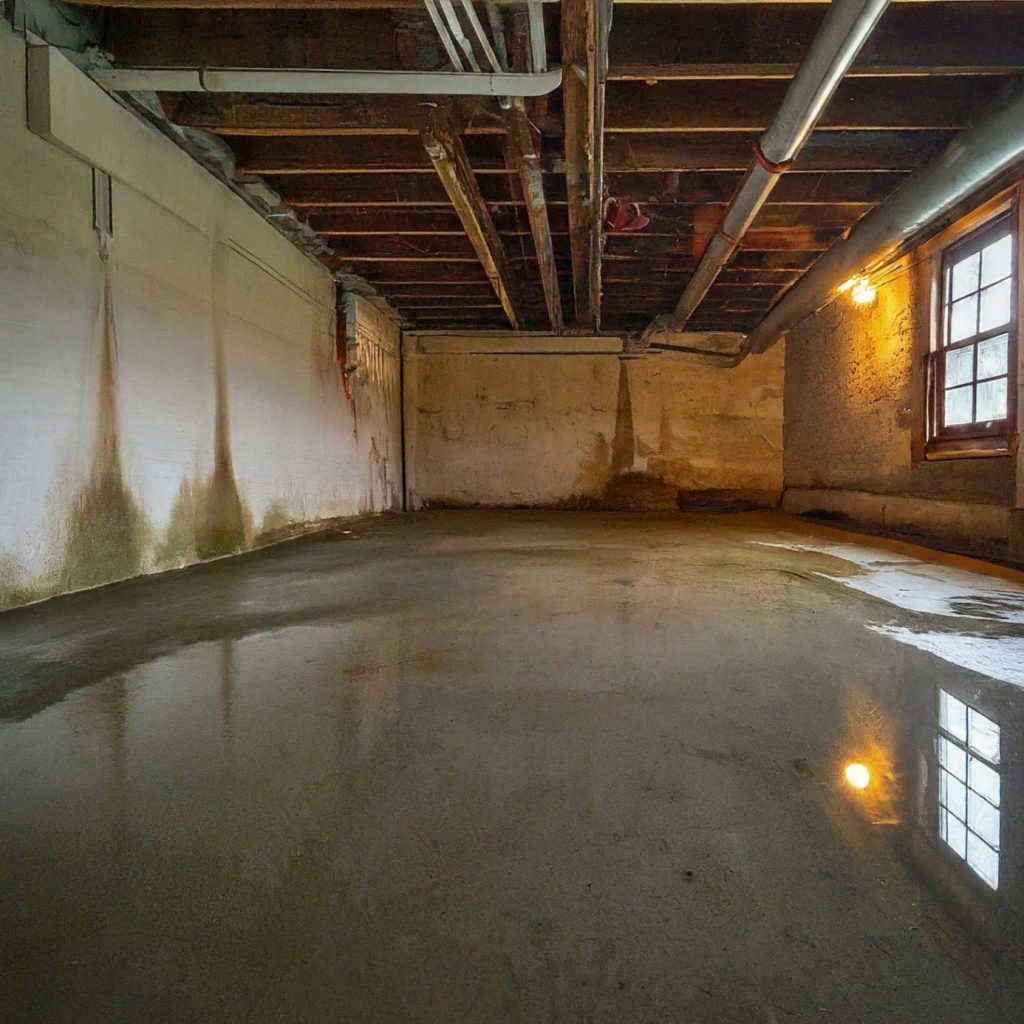
Water stains in your basement can be a disconcerting sight, hinting at potential moisture problems and structural concerns. Here’s a breakdown of the common culprits behind these stains and how to identify them:
Causes Of Water Stains in Basement
- Leaks: Cracks in the foundation walls or basement floor can allow water seepage from the surrounding soil. Leaking pipes within the basement walls can also manifest as water stains.
- Condensation: High humidity levels in your basement can cause condensation on cooler walls, leading to water stains and potential mold growth. This often occurs during hot and humid summer months.
- Improper Drainage: Poor soil grading around the house exterior can cause water to pool near the foundation, increasing the risk of leaks and water stains in the basement.
- Flooding: Heavy rainfall, overflowing gutters, or spring thaws can cause water to seep into the basement through cracks, window wells, or other openings, leaving behind water stains.
Symptoms Of Water Stains
- Visible Stains: The most obvious sign is the presence of brown, yellow, or even greenish stains on the basement walls or floor. The color might indicate the source of the water – mineral deposits from foundation leaks or rust from leaking pipes.
- Flaking Paint Or Efflorescence: The paint might peel or flake if water stains appear on painted basement walls. Sometimes, you might see a white, chalky residue on the walls called “efflorescence.” This indicates mineral deposits left behind by evaporating water, suggesting a past or ongoing moisture issue.
- Musty Odors: A damp and musty odor in the basement can indicate water infiltration and potential mold growth.
- Dampness To The Touch: If the basement walls or floor feel damp to the touch, it’s a strong indicator of ongoing moisture problems.
Solutions To Fix Water Stains In Basement
- Identify The Source Of The Leak: Carefully inspect walls, floors, and around pipes for any cracks or leaks. Look for signs of moisture entry points from outside the foundation.
- Address Foundation Cracks: Small cracks may be sealed with hydraulic cement, but larger cracks might require professional repair.
- Dehumidifier: A dehumidifier can help control moisture levels in the basement and prevent condensation on walls.
- Improve Drainage: Ensure proper soil grading around the house exterior to direct water away from the foundation.
13. Mildew In The Attic
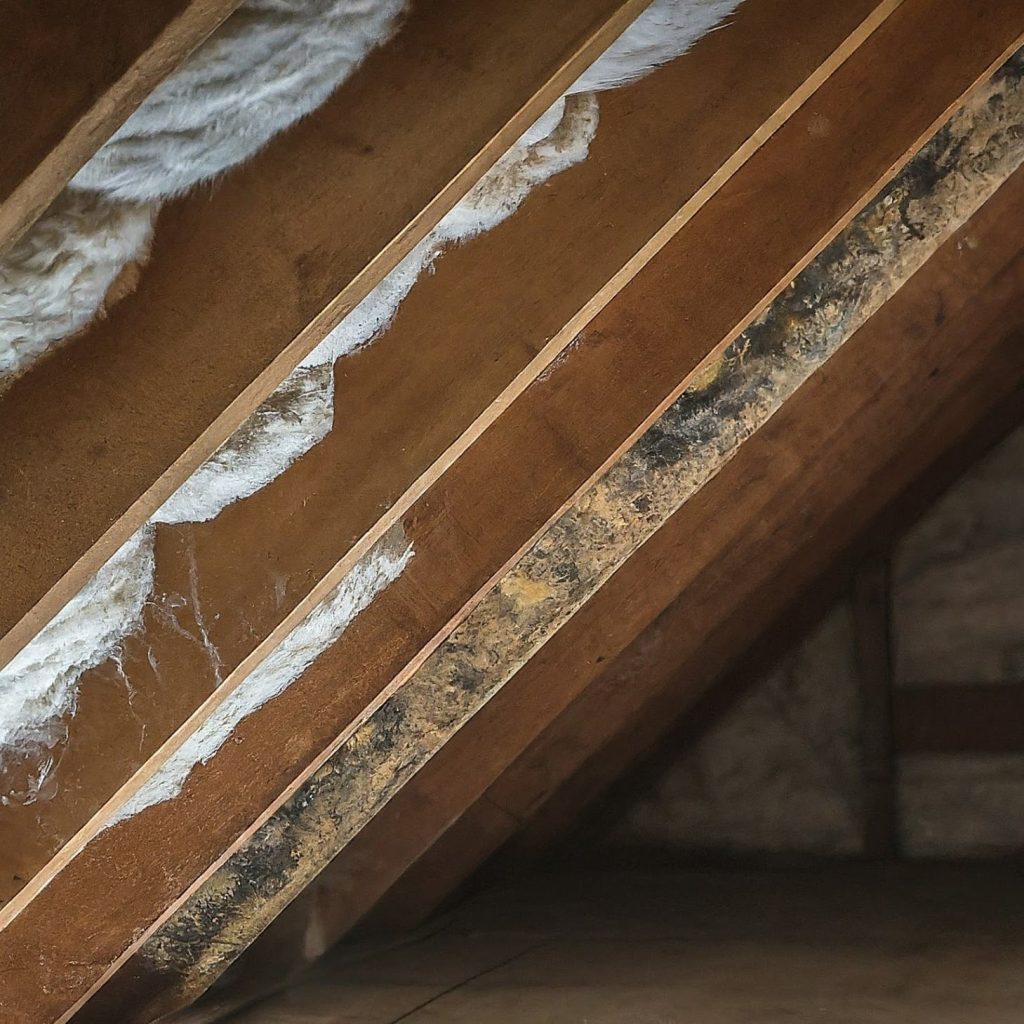
Mildew in the attic can be a real headache for homeowners. Not only is it unsightly, but it can also damage your attic’s insulation and potentially pose health risks. Here’s what you need to know:
Why Mildew Grows In Attics
- Lack Of Ventilation: Attics are prone to poor ventilation, especially if they lack proper soffit vents, ridge vents, or other airflow pathways. This stagnant air becomes warm and humid, creating a perfect breeding ground for mildew, which thrives in damp environments.
- Temperature Fluctuations: Attics experience significant temperature swings throughout the year. In hot summers, the attic becomes hot and humid, while condensation on poorly insulated surfaces can occur in cold winters. These fluctuations create ideal conditions for mildew growth.
- Moisture Intrusion: Leaks from the roof, around chimneys, or plumbing penetrations can introduce moisture into the attic. This additional moisture further exacerbates the problem and fuels mildew growth.
- Improper Insulation: Inadequate or uneven insulation allows warm, moist air from living areas below to rise into the attic. This warm air condenses on cooler attic surfaces, creating moisture that mildew loves.
Signs of Mildew Growth
- Visible Mold: The most obvious sign is the presence of visible mold or mildew growth on attic walls, rafters, or insulation. Mildew typically appears as black, green, or white patches or spots.
- Musty Odors: A lingering musty or earthy smell in the attic can indicate mildew growth, even if it’s not readily visible.
- Damaged Insulation: Mold can deteriorate insulation materials, reducing their effectiveness and potentially causing them to sag or clump.
- Respiratory Problems: Inhaling mildew spores can irritate the respiratory system, leading to coughing, sneezing, or difficulty breathing for those with allergies or sensitivities.
Solutions To Fix Mildew Growth In Attic
- Improve ventilation: Install soffit vents and a ridge vent to create airflow through the attic.
- Insulate properly: Ensure proper attic insulation levels to prevent warm, moist air from entering the attic from the living areas below.
- Increase air circulation: Consider installing a small attic fan to improve air circulation and reduce humidity.
Home Warranty Plans & Plumbing Coverage
Home warranties can help cover various common plumbing issues, but it’s important to understand the specifics of your plan. Here’s a breakdown of how home warranty coverage typically works for plumbing problems:
What Gets Covered
- Repairs: Home warranties typically cover the cost of repairs for various plumbing components within your home. This can include repairs to:
- Leaky faucets and showerheads
- Clogged drains (excluding drain cleaning for preventative maintenance)
- Running toilets
- Burst pipes (within the walls or covered areas, may not cover exposed pipes)
- Water heater malfunctions (depending on the plan and age of the water heater)
- Parts & Labor: Most home warranties cover the cost of parts and labor required to fix the plumbing issue. This can save you significant money compared to paying a plumber directly.
What Might Not Be Covered
- Preventative Maintenance: Home warranties usually don’t cover drain cleaning for preventative maintenance purposes.
- Existing Conditions: If a plumbing problem existed before you purchased the home warranty, it likely won’t be covered.
- Normal Wear & Tear: Home warranties typically don’t cover issues caused by normal wear and tear over time. However, the definition of “normal wear and tear” can vary depending on the plan.
- Specific Exclusions: Always check your home warranty contract for any specific exclusions related to plumbing or other covered items.
Final Word
With this knowledge of common plumbing problems and their solutions, you've taken a big step toward becoming a homeowner hero! Remember, tackling minor issues yourself can save you time and money. However, feel free to call a licensed plumber or home warranty provider for complex problems or situations beyond your comfort level.
Preventive maintenance is also crucial to avoiding plumbing emergencies. Develop a habit of regularly cleaning drains, checking leaks, and ensuring proper water pressure. By being proactive and knowing how to address minor issues, you can keep your home's plumbing system running smoothly and avoid major headaches.
related articles
 Discover First American Home Warranty Locations and What You Need to Know About Their Cover.
Discover First American Home Warranty Locations and What You Need to Know About Their Cover.
 Reviews of Home Warranty Companies Show You How to Determine If Your Home Is Covered
Reviews of Home Warranty Companies Show You How to Determine If Your Home Is Covered











